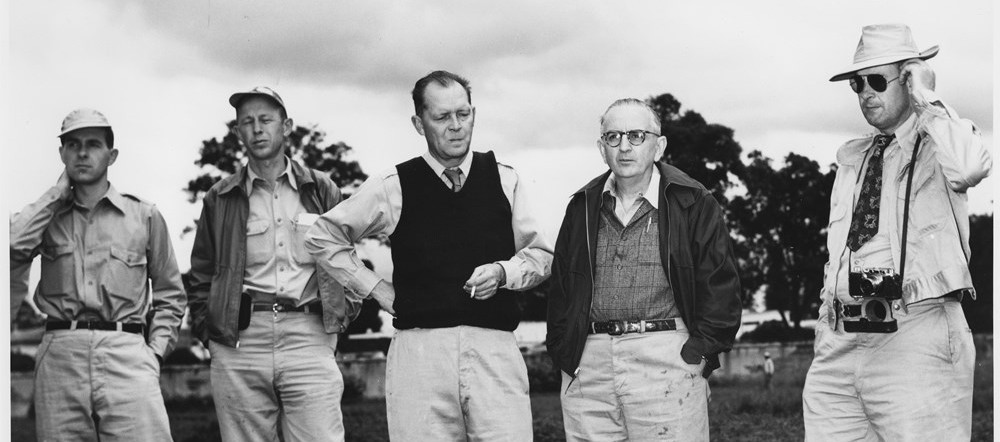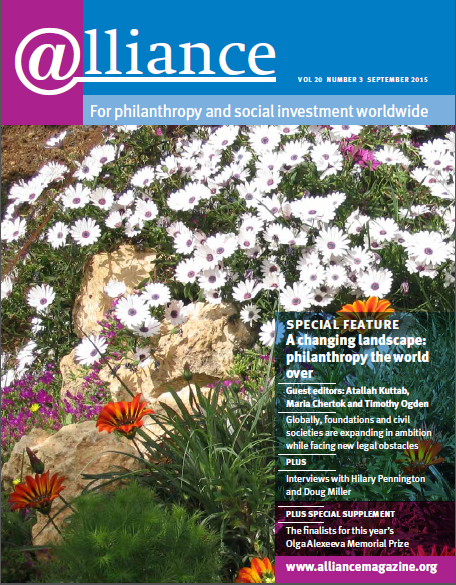Santayana’s famous dictum, ‘Those who cannot remember the past are condemned to repeat it’, could have been made in direct reference to philanthropy. As Maribel Morey and Benjamin Soskis write introducing a new blog focused on the history of philanthropy, the central project of philanthropy to make the future different from the present (even when the change sought is a return to the past) means being resolutely forward-looking. As a consequence the industry in general has given its past ‘only a passing and most often disapproving look’.
That is certainly true when it comes to looking at questions of philanthropic strategy and impact measurement. But it’s impossible to assess how current donors’ efforts to measure philanthropic impact are different from those of the past without knowledge of historical practices. HistPhil, the new history of philanthropy blog notwithstanding, one of the few systematic attempts to document, understand and learn from the philanthropic past is the Rockefeller Archive Center. I had the chance to talk with Barbara Shubinski, senior historian at the centre, about how the Rockefeller Foundation has thought about and measured impact over the 100 years of its existence.
Experts in the field rather than experts in evaluation
Shubinski says the key to understanding past philanthropic practice is that ‘they always attempted to maximize their dollar. They always cared about evaluation but they had different assumptions about how to do evaluation, one of which was that you needed experts in the field’ rather than experts in evaluation.
That’s the approach that the Rockefeller Foundation took both to setting strategy and to evaluating its efforts. Shubinski cites work in the foundation’s agricultural programmes as a good example.
Historically, she says, the foundation was ‘very big on doing surveys as a preparation activity. Before they went into any field they would extensively survey what the needs were. In the 1940s, for instance, when they decided to launch an agricultural programme, they sent three agricultural scientists to Mexico to do an exploratory survey’. A similar approach was used to assess the impact of the work and to reassess the foundation’s strategy in 1980. ‘They did a review of what was then called the Conquest of Hunger programme to evaluate whether it should be continued. They concluded that enough other people were funding agriculture work in direct food supply by then, so they decided to cancel it.’
In the past, measuring impact ‘was more like the way you might do your personal budget’.
At a high level that approach sounds strikingly like the process being followed by the Open Philanthropy Project, a joint effort of GiveWell and Good Ventures.[1] As they assess potential new opportunities, they commission several expert reviews of a field and strongly consider ‘room for more funding’ when choosing what areas to invest in.
Of course, there are also major differences between the exact way that evidence is gathered and evaluated between today’s practices and yesterday’s. Shubinski notes: ‘They didn’t really use numbers in quite the same way. They used markers of success that were very straightforward: how many children were vaccinated? How many people graduated? It was more like the way you might do your personal budget.’

Warren Weaver, the Rockefeller Foundation director for natural sciences and agriculture, visits the Mexican Agriculture Programme, Chapingo, Mexico, 1953. Programme officers John Niederhauser, George Harrar and Weaver are in the centre, left to right.
Impact evaluation by experts in evaluation
It was not until the 1970s that the idea of impact evaluation by experts in evaluation and modern concepts of impact evaluation began to take hold. ‘That’s when they became more likely to hire people with a specific toolkit called evaluation that’s not necessarily topic- or field-based. They started to use evaluative metrics that cross fields. Before, they wouldn’t have bought [into the idea of cross-field evaluation]. They would have wanted something more connected to the field or undertaking.’
In the 1970s you can begin to see a distinct change in the language used inside the foundation, and certainly by the 1980s, according to Shubinski.
Nothing new about adopting business principles in philanthropy …
But she protests that there hasn’t been, as some assert, a newfound adoption of business principles in philanthropy. ‘Foundations have always used models adopted from business; it’s just that they used the business model of the 1920s or the mid-century in those eras, and now they’re using today’s. That’s the point of organized [institutional] philanthropy. It’s not that the borrowing of models from business is new; it’s that the specific business model is different. Business metrics are different now.’
So in the mid-20th century there was a great deal of reliance on experts and on bureaucracy. ‘That’s the model they applied to philanthropy because they believed it was the most efficient,’ says Shubinski. ‘The tech moguls of today look at this and think that it’s inefficient, that it’s not disruptive, but at the time it was the new innovation that was going to make things different.’
… or about taking a strategic approach to philanthropy
These days we often talk about philanthropic strategy in terms of theories of change. While the language of a theory of change is new, Shubinski argues, the underlying concepts have always been part of strategic philanthropy. Indeed, that’s what set the early philanthropists apart from the models of charity they were trying to disrupt (to use a thoroughly modern term), according to Morey and Soskis. A strategic approach that was new and different was ‘essential to philanthropy’s self-definition as its partisans distinguished it from the traditional ethic of charity, which, its critics charged, had brought the hordes of beggars that pooled around monasteries, and not much else’, they write. It’s remarkable how much recent critiques of philanthropy, like those of tech investor Sean Parker, mirror the critiques early philanthropists made of the charity ‘industry’ of their own day.
The approach today reflects a different theory of change from that of earlier philanthropists. ‘But we’ve always had a theory of change,’ says Shubinski. ‘Unfortunately, today, if you have a critique of an approach to impact as it is defined and measured currently, for example, the idea of disruption, it sounds like you’re against change and innovation. But disruption as a means of achieving impact is just one model among many possibilities.’
Learning from philanthropy’s history can and should inform the present generation of philanthropists’ quest for impact. Some are looking to the past as well as to the future. One of the Open Philanthropy Project’s initiatives is studying the history of philanthropy to better understand what worked in the past. That’s a hopeful sign.
But I would be more hopeful if I saw more frequent familiarity and reference within the current movements not only to philanthropic history but to history in general, for instance in books like Seeing like a state and The best and the brightest or the documentary The fog of war. Each documents the potentially negative consequences of unquestioning faith in ‘modern’ tools and techniques to change the world for the better. It would do us all good to cultivate the humility that comes from studying the mistakes and failings of the people who came before us, who cared just as much about making the world a better place as we do and put all their energy into the process in the full confidence that they were different and were ‘doing it right’ this time.
Timothy Ogden is executive partner of Sona Partners and a contributing editor to Alliance. Email timothy.ogden@sonapartners.com
Footnotes
- ^ Full disclosure: I sit on the board of GiveWell and have participated in an Open Philanthropy Project event.




Comments (0)